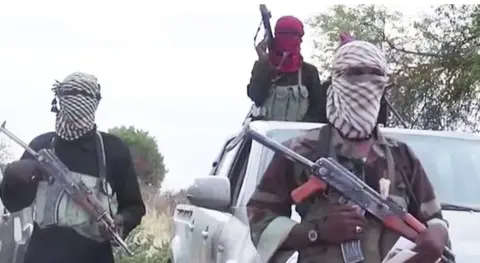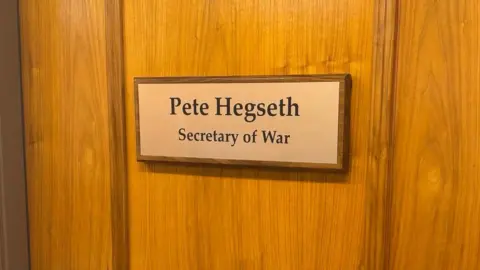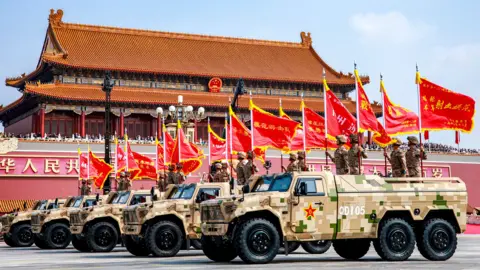In a significant display of preparedness, Taiwan's capital, Taipei, came to a halt on Thursday as the island conducted one of its largest civil defense exercises to date, simulating scenarios in anticipation of a potential Chinese invasion. Air raid sirens pierced the sky, prompting residents in certain areas to seek indoor shelter, while the city's traffic ground to a standstill. The exercise coincided with Taiwan's annual Han Kuang military drills, aimed at strengthening defenses against increasing military threats from China.
China views self-governed Taiwan as part of its territory and has not ruled out the use of military force to achieve "reunification." Tensions escalated following the election of Taiwan's president, William Lai, whose pro-independence stance has drawn sharp criticism from Beijing. Attendees at the exercise included Lai himself, government officials, and representatives from foreign nations, notably Raymond Greene, the head of the American Institute in Taiwan, which functions as an unofficial US embassy.
In his closing remarks, Lai highlighted the significance of social cohesion and preparedness in safeguarding Taiwan's democratic values. “We prepare for war to avoid war, striving for peace through preparedness,” he stated. Meanwhile, China dismissed the drills, labeling them a misguided ploy by Lai and his ruling Democratic Progressive Party to promote their pro-independence agenda.
This year's Urban Resilience exercise uniquely combined elements of civilian and military preparedness across the island, beginning on Tuesday and concluding Friday. During the exercise, air raid sirens blared for thirty minutes each day, compelling residents in designated zones to seek shelter indoors or face penalties. Businesses paused operations, and traffic was halted, as drivers were instructed to pull over and remain inside.
Emergency workers and volunteers took part in realistic drills in Taipei, carrying out evacuations at key public sites such as temples, schools, and subway stations. A mock mass casualty event simulated the aftermath of missile strikes, where emergency responders extracted 'survivors' and triaged their injuries while setting up supply distribution points.
The Urban Resilience drills are part of broader efforts throughout the year to educate Taiwan's populace on defense issues and prepare urban areas for potential conflict. While US officials have warned of a growing threat from China, recent polls indicate a significant portion of the Taiwanese public is skeptical about an imminent invasion. A survey from last October revealed that over 60% of respondents doubted China's likelihood to invade within five years.
Opinions within the population vary, with some expressing confidence in the necessity of such drills for national defense readiness. Others, however, question the practical efficacy of defending against an overwhelmingly stronger Chinese military. Recent military exercises saw more than 22,000 troops engaged in land, sea, and air drills, testing newly acquired weaponry such as US-supplied missile systems and Taiwan-made rockets.
This year's Han Kuang exercises have also focused on countering unconventional warfare tactics and misinformation from China, with practical scenarios conducted in urban settings. Recent drills included urban combat simulations and helicopter rearming exercises, underscoring Taiwan’s ongoing commitment to fortifying its defenses in the face of persistent threats from across the Strait.
China views self-governed Taiwan as part of its territory and has not ruled out the use of military force to achieve "reunification." Tensions escalated following the election of Taiwan's president, William Lai, whose pro-independence stance has drawn sharp criticism from Beijing. Attendees at the exercise included Lai himself, government officials, and representatives from foreign nations, notably Raymond Greene, the head of the American Institute in Taiwan, which functions as an unofficial US embassy.
In his closing remarks, Lai highlighted the significance of social cohesion and preparedness in safeguarding Taiwan's democratic values. “We prepare for war to avoid war, striving for peace through preparedness,” he stated. Meanwhile, China dismissed the drills, labeling them a misguided ploy by Lai and his ruling Democratic Progressive Party to promote their pro-independence agenda.
This year's Urban Resilience exercise uniquely combined elements of civilian and military preparedness across the island, beginning on Tuesday and concluding Friday. During the exercise, air raid sirens blared for thirty minutes each day, compelling residents in designated zones to seek shelter indoors or face penalties. Businesses paused operations, and traffic was halted, as drivers were instructed to pull over and remain inside.
Emergency workers and volunteers took part in realistic drills in Taipei, carrying out evacuations at key public sites such as temples, schools, and subway stations. A mock mass casualty event simulated the aftermath of missile strikes, where emergency responders extracted 'survivors' and triaged their injuries while setting up supply distribution points.
The Urban Resilience drills are part of broader efforts throughout the year to educate Taiwan's populace on defense issues and prepare urban areas for potential conflict. While US officials have warned of a growing threat from China, recent polls indicate a significant portion of the Taiwanese public is skeptical about an imminent invasion. A survey from last October revealed that over 60% of respondents doubted China's likelihood to invade within five years.
Opinions within the population vary, with some expressing confidence in the necessity of such drills for national defense readiness. Others, however, question the practical efficacy of defending against an overwhelmingly stronger Chinese military. Recent military exercises saw more than 22,000 troops engaged in land, sea, and air drills, testing newly acquired weaponry such as US-supplied missile systems and Taiwan-made rockets.
This year's Han Kuang exercises have also focused on countering unconventional warfare tactics and misinformation from China, with practical scenarios conducted in urban settings. Recent drills included urban combat simulations and helicopter rearming exercises, underscoring Taiwan’s ongoing commitment to fortifying its defenses in the face of persistent threats from across the Strait.






















